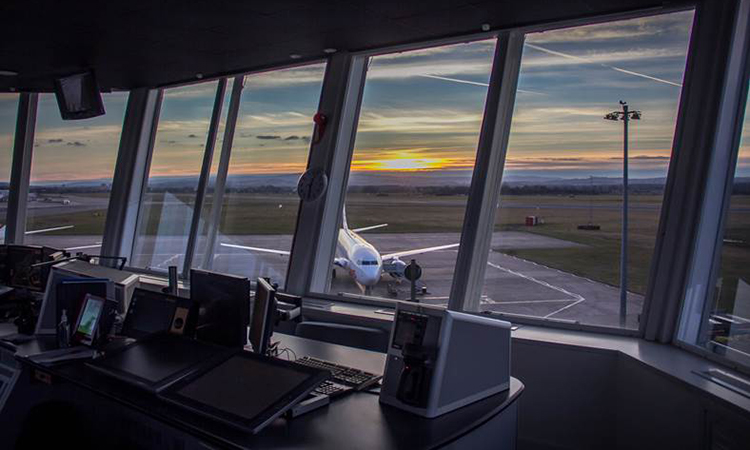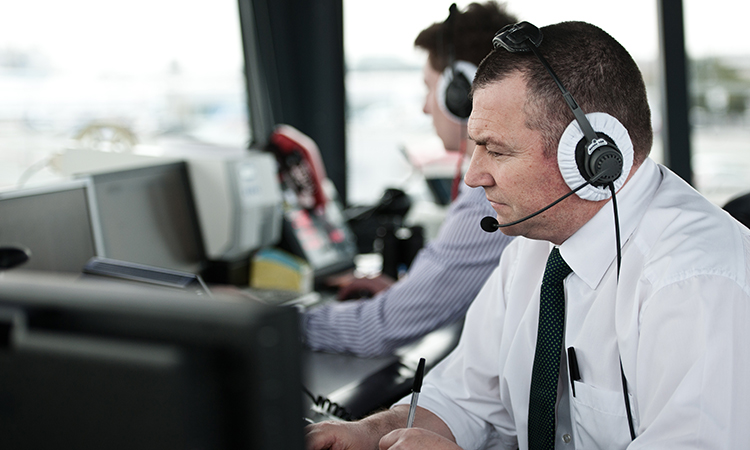Delivering the UK’s invisible aviation infrastructure project
- Like
- Digg
- Del
- Tumblr
- VKontakte
- Buffer
- Love This
- Odnoklassniki
- Meneame
- Blogger
- Amazon
- Yahoo Mail
- Gmail
- AOL
- Newsvine
- HackerNews
- Evernote
- MySpace
- Mail.ru
- Viadeo
- Line
- Comments
- Yummly
- SMS
- Viber
- Telegram
- Subscribe
- Skype
- Facebook Messenger
- Kakao
- LiveJournal
- Yammer
- Edgar
- Fintel
- Mix
- Instapaper
- Copy Link
As the UK aviation industry tackles the challenges of today, it is also focused on the future and how it can build back better. For the industry and its recovery, airspace modernisation is an important piece of the jigsaw. Chief of the Airspace Change Organising Group (ACOG), Mark Swan, describes the role of ACOG in ensuring that a joined-up airspace modernisation effort is implemented across the UK as the industry recovers from the pandemic.


Why do we need airspace modernisation?
The need to upgrade airspace was laid out in the UK’s Airspace Modernisation Strategy, which was published in December 2018. It requires the main airports to redesign their airspace (below 7,000ft) and for NATS, the UK’s main air navigation service provider (ANSP), to modernise the network that sits above, which is known as en-route airspace.
When UK airspace was designed in the 1950s, it was never envisaged that it would need to cope with the volume of flights that it did prior to the pandemic”
When UK airspace was designed in the 1950s, it was never envisaged that it would need to cope with the volume of flights – over 2.5 million a year – that it did prior to the pandemic and that it is expected to again as the industry recovers.
Over time, there have been huge technological advances in the design of aircraft and the navigational aids used by pilots and air traffic controllers (ATCOs) to direct aircraft. Modernising UK airspace will help airports and airlines across the country to make the most of these capabilities, helping to improve efficiency for all travellers and ensuring that it can manage the increasing numbers of aircraft that will return to our skies over the next few years.
Impact of COVID-19
In March 2020, the national airspace change programme was paused, with the 21 major airports involved in the programme forced to turn their attention to dealing with the crisis that had erupted across the globe. The programme has since been remobilised, mainly as a result of some short-term UK government funding that was announced in March 2021. This funding is enabling airports to complete the next phase of the airspace change process.
While flight numbers are currently low due to the pandemic, there is a unique opportunity now for the industry to build back better”
For airlines and airports, and the millions of people that the aviation industry employs, the COVID-19 pandemic has presented the toughest challenge in its peacetime history. Significant changes to the way that the industry operates have had to be implemented in order to deal with the fallout from the pandemic. At the same time, our airports, the UK’s gateways to the world, have seen catastrophic reductions in flight and passenger numbers and significant job losses.
While flight numbers are currently low due to the pandemic, there is a unique opportunity now for the industry to build back better so that, as capacity returns, the infrastructure is in place that drives efficiency and improves resilience and environmental outcomes.


Credit: NATS – The UK’s Airspace Modernisation Strategy requires NATS, the UK’s main ANSP, to modernise the network that sits above 7,000ft, which is known as en-route airspace.
What are the benefits of upgrading our airspace?
Supporting economic recovery
Airspace upgrades are critical to ensure that the air transport network delivers the global connectivity that is needed to underpin the UK’s economic recovery in a post-Brexit and, eventually, post-pandemic world. When passengers return to the skies, airspace upgrades will reduce congestion, improve the overall resilience of the airspace system and make travel easier and more efficient. The competitiveness of regional air travel that serves Northern England, the Midlands, Scotland, Wales and the West Country have the potential to be strengthened by new routes that empower local tourism, business and international trade.
Generating environmental benefits
Simplifying the airspace by leveraging modern technology will make it easier for today’s aircraft to fly more direct routes, with quicker climbs to energy-efficient cruising altitudes and more efficient descents to help to reduce emissions, as well as provide opportunities to reduce the noise footprint on the ground.
By upgrading our airspace, we can play a key part in building back better and contributing to a cleaner recovery of the UK economy”
By upgrading our airspace, we can play a key part in building back better and contributing to a cleaner recovery of the UK economy. Based on 2019 air traffic figures, current forecasts demonstrate that modernising airspace in the UK offers the potential to reduce future aviation CO2 emissions by up to 20 per cent.
The government has already committed £350 million to fuel a green recovery and has announced the creation of the Jet Zero Council, with the ambition to achieve the first ever zero-emission long haul passenger plane. Modernising the airspace will put the necessary infrastructure in place to help to support this ambition.
Supporting all airspace users
New forms of aviation – such as Unmanned Aircraft Systems (e.g., drones) and electric urban air mobility (UAM) aircraft – are also dependent on the airspace upgrades to bring their cutting-edge products and services to the mass market. The £1.4 billion general aviation sector of sports and leisure flyers is reliant on the airspace upgrades to secure greater freedom to operate.


What is the Airspace Masterplan?
The Airspace Masterplan is a high-level co-ordinated implementation plan that identifies which individual, but still interdependent, airspace design changes need to be developed to deliver the range of benefits that modernisation will bring. The masterplan considers potential conflicts, trade-offs and interdependencies and the concepts that might be used to resolve them. It won’t show the detail of individual airspace designs or solutions, as these will be publicly consulted on separately by airports, as sponsors of the changes, over the coming years.
What is ACOG’s role?
One of the Airspace Change Organising Group’s (ACOG) most important roles is to draw together the Airspace Masterplan that looks out to 2040. Creating and maintaining the masterplan is the cornerstone of our work and will be the focus of our engagement with all stakeholders that have an interest in airspace modernisation.
ACOG will produce a masterplan in collaboration with stakeholders that provides detailed information on the airspace design options that are under development”
ACOG will produce a masterplan in collaboration with stakeholders that provides detailed information on the airspace design options that are under development, the potential areas of overlap between individual changes and the compromises and trade-offs that may need to be made to integrate them effectively.
The next iteration of the masterplan will be created later in 2021, providing more details on the impacts of the individual changes. There will be an opportunity for the public to access and have their say on the masterplan. It will detail how the proposed airspace changes might affect them and when they will be consulted by their airport about different aspects of the programme.
What next?
Now, with the short-term funding granted by government, UK airports have the backing that they need to continue this critical programme of upgrading airspace and supporting our ambition to deliver quicker, quieter and cleaner journeys.
The UK’s airspace is an essential, but invisible, part of our national infrastructure. This programme will help the UK to build the post-Brexit trading infrastructure that it needs – our routes in the sky – while driving the industry forward on its journey to ‘jet zero’, with more optimised routes that reduce carbon emissions.
We are now working collaboratively with the Department for Transport (DfT), the UK Civil Aviation Authority (CAA) and all of the airports that are participating in the programme to remobilise and provide clear guidance for the next stages of engagement around the masterplan.
Mark Swan is the Head of the Airspace Change Organising Group (ACOG), an independent body charged with coordinating national airspace transformation in accordance with the UK government’s Airspace Modernisation Strategy.
Swan began his aviation career in 1979 when he joined the Royal Air Force after completing a UK law degree. He flew Phantom and Tornado fighters until 1993, after which he joined the UK Ministry of Defence. In 2006, Swan was appointed as an adviser to UK Defence Ministers and the Chief of Defence Staff’s Executive Board, advising on the strategic risks to Defence in equipping for, and performing, its military tasks.
Swan later joined the UK CAA as Director of Airspace Policy (DAP) and was the Board member responsible for the safe and efficient use and design of national airspace. In 2013, he was appointed as Group Director for Safety and Airspace Regulation, charged with merging the previous Safety and Airspace groups and developing the UK CAA into a performance-based regulator. He joined ACOG in 2019.
The Airspace Change Organising Group (ACOG) was established in 2019 – at the behest of the UK government’s Department for Transport (DfT) and the UK Civil Aviation Authority (CAA) – to co-ordinate the delivery of key aspects of the government’s Airspace Modernisation Strategy; namely, the national programme of airspace change amongst major UK airports.
Related topics
Air traffic control/management (ATC/ATM), Aircraft, Airside operations, COVID-19, Emissions, Funding and finance, Passenger volumes, Sustainability, Sustainable development
Related organisations
Airspace Change Organising Group (ACOG), Civil Aviation Authority (CAA), Department for Transport (DfT), UK Government



















I shall be surprised if the aviation industry, of which this is a part, gives proper priority to the environment in this exercise. The environment and the noise impact of aviation has been consistently ignored in the past and is now being used as a “green fig leaf” to cover this exercise to facilitate yet more damaging flights. Furthermore the exercise will concentrate flights into new motorways in the skies without any way of knowing whether this will increase or decrease the noise impacts. The research has not been done to establish whether 1 person overflown frequently is better or worse than 5 people overflown less frequently. If that one person is driven to insanity and becomes a burden on the community, is that really better (morally and economically) than 5 people being irritated?